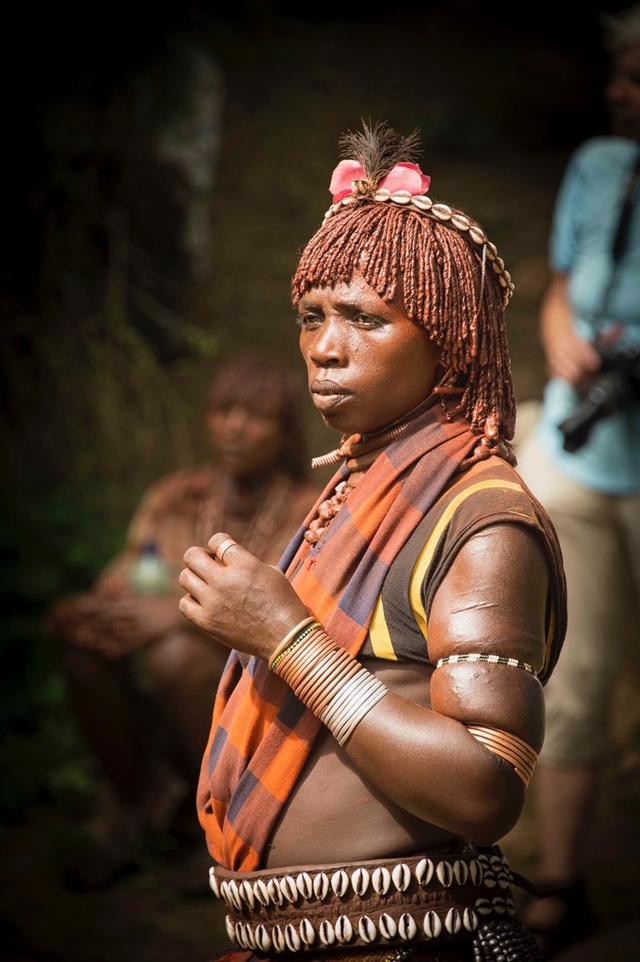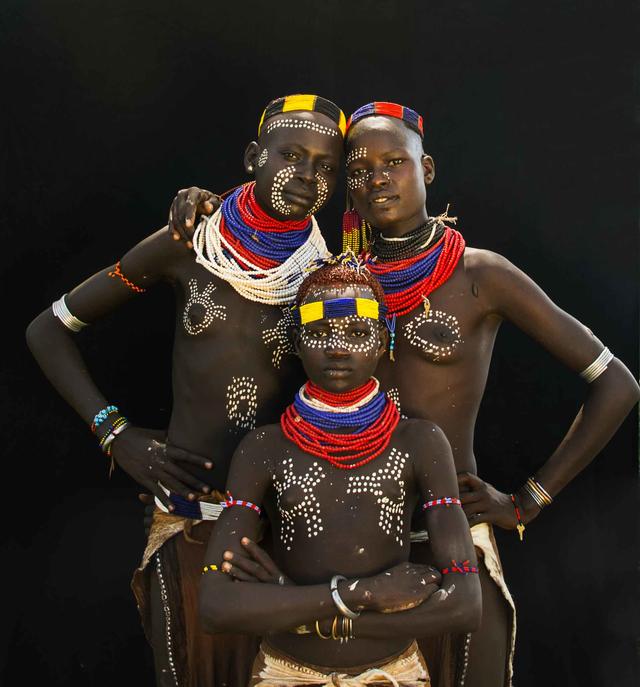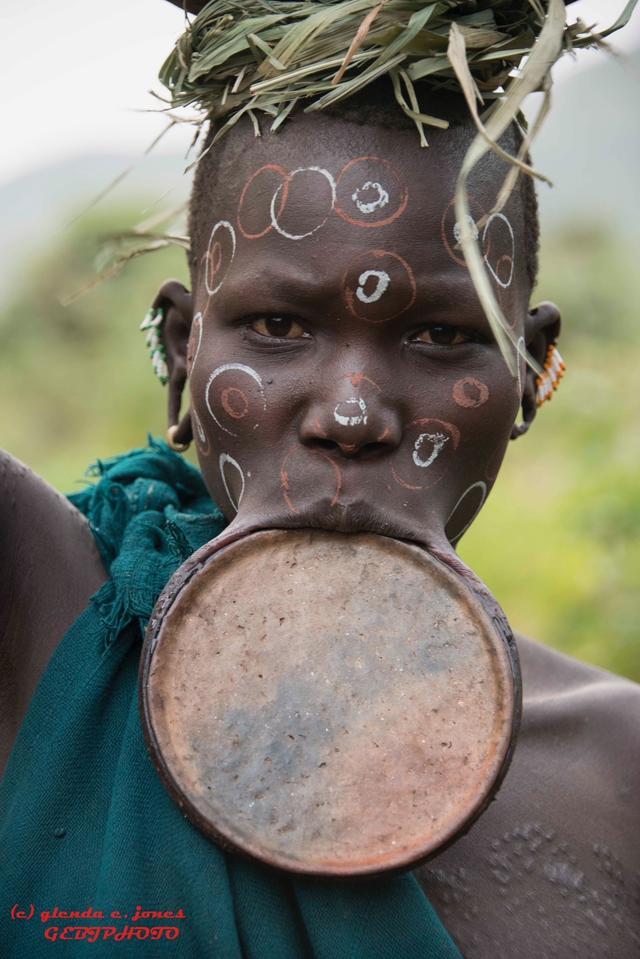
Capturing moments, connecting cultures: Glenda E. Jones's photographic journey through Africa and beyond

Above: Hamer male elders' role is to direct and support families and societies in practices, rituals, and ceremonies to ensure their survival, existence, and peaceful continuity. Photo credit: Glenda Jones.
Glenda E. Jones, a trailblazing 1968 graduate of Central State University, has carved a remarkable path through the realms of corporate America and cultural preservation. Armed with her camera and an insatiable curiosity, Jones embarked on a prolific career with AT&T, spanning decades and continents. Her journey took her to 35 African countries, where she immersed herself in the diverse tapestry of indigenous cultures, capturing their essence through the lens of her camera.
From the bustling markets of Nairobi to the remote villages of the Omo Valley, Jones's photography serves as a window into worlds rarely seen by outsiders. With a keen eye for detail and a deep respect for tradition, she has documented the lives of people whose stories might otherwise have gone untold.
Jones's work transcends mere imagery; it is a testament to the power of storytelling and the importance of cultural preservation. Through her lens, she has captured moments of joy, resilience, and transformation, offering a glimpse into the rich tapestry of human experience. Her photographs serve as a bridge between cultures, fostering understanding and empathy in an increasingly interconnected world.
From her humble beginnings at Central State University to her globe-trotting adventures with AT&T, Jones's legacy is one of courage, curiosity, and compassion. Through her lens, she continues to inspire others to see the beauty in diversity and the power of photography to transcend boundaries.
Transition from Harlem to Ohio
Jones, a native New Yorker, said growing up in Harlem was an experience rich in diversity and opportunity. From the vibrant streets of Harlem to the tranquil landscapes of Ohio, she experienced life in both rural and urban environments.
In a recent conversation, Jones reminisced about her childhood, highlighting the dynamic environment of New York City. "It was really, really great," she recalls, emphasizing the exposure to a multitude of cultures and experiences that shaped her perspective.
As Jones transitioned from childhood to young adulthood, she confronted the pivotal decision of pursuing higher education. Despite encountering obstacles in her initial plans, she persevered with the unwavering support of her family. A fortuitous intervention from her uncle John, who called his Alpha Phi Alpha fraternity brother, founding President of Central State University, Charles H. Wesley, secured her admission to Ohio’s only public Historically Black University, marking the beginning of a transformative journey.
“Leaving the streets of Harlem and New York City and going to the cornfields of Ohio, that was a true reckoning,” Jones said. “I had good support while I was there, and it turned out to be the best experience that I could have ever had.”
A world of opportunities
Jones delved deeper into her career trajectory, shedding light on her transition into international marketing and her experiences working on a team with AT&T's global operations. Midway through her career, Jones embraced the opportunity to travel extensively as part of her role, joining her colleagues in introducing Bell Laboratories’ commercial marketing services worldwide.

Her journey took her across continents, from Canada to the United Kingdom, France, Japan, and eventually to Africa — a pivotal moment that shaped her professional life. Jones’s proactive approach to advocating for diversity and representation within corporate initiatives led to her involvement on teams that led groundbreaking projects, including the introduction of undersea fiber optic cable technology to African countries, which resulted in multiple cables being installed to connect those countries globally.
Despite her remarkable achievements, Jones reflected candidly on the challenges she faced as an African American woman navigating corporate America in the final decades of the 20th century. Confronted with systemic barriers and discriminatory practices, she grappled with the decision to advance further up the corporate ladder. Ultimately, Jones prioritized her integrity and sense of moral obligation.
As she embarked on her international assignments, Jones found herself immersed in a world of wonder and enlightenment, each destination unveiling new dimensions of history, heritage, and humanity.
A world of discovery: Unveiling cultural riches
One of the most profound moments in Jones’s travels occurred during a visit to Egypt, where she encountered the ancient wonders of the pyramids and the treasures housed within the Cairo Museum. For Jones, seeing statues resembling herself — a Black woman — in historical artifacts resonated deeply, offering a tangible connection to a shared heritage often overlooked or misrepresented.

Navigating corporate corridors and government offices across continents, Jones observed the varied treatment of women — a poignant reflection of global gender dynamics. While some countries relegated women to secretarial roles, in others, like Kenya and Egypt, women held positions of leadership and authority.
Jones’s travels also shattered preconceived notions and stereotypes, challenging perceptions shaped by mainstream media and popular culture. Flying into Nairobi at night, she marveled at the illuminated skyline — a testament to the vibrancy and modernity of African capitals often overshadowed by narratives of poverty and underdevelopment.
Yet, amidst the grandeur of cityscapes and cultural landmarks, Jones found profound moments of human connection and understanding. From sharing meals with Ethiopian colleagues to photographing the intimate dynamics of Ghanaian families, her experiences underscored the importance of building trust and forging genuine relationships across cultural divides.
As Jones reflected on her journey, she emphasized the transformative power of education and empathy, urging us to embrace diversity as a source of strength and enrichment.
In a world marked by division and discord, Jones’s story invites us to embrace the richness of our shared humanity and celebrate the mosaic of cultures that define our collective heritage.
Capturing moments, connecting cultures
Jones's passion for photography transcends mere snapshots; it's a profound exploration of identity, memory, and human connection. From the tender age of 10, when her mother placed a camera in her hands, to her globetrotting adventures as a seasoned professional, Jones’s lens has captured the essence of diverse landscapes and the vibrancy of life itself.

The advent of digital photography marked a new chapter in Jones’s artistic journey — a chapter defined by boundless creativity and technological innovation. Enthralled by the possibilities offered by digital cameras, she eagerly embraced this new medium, harnessing its power to capture the beauty of the world with unprecedented clarity and ease.

Photography, for Jones, is more than just a hobby; it's a means of preserving history, fostering understanding, and celebrating diversity. Through her lens, she seeks to elevate marginalized voices and challenge stereotypes.
Whether she's photographing strangers in distant lands or documenting the resilience of communities facing adversity, Jones’s warmth and sincerity shines through, bridging cultural divides and fostering genuine connections.
Jones continues to weave a tapestry of human experiences, one frame at a time. With each click of the shutter, she captures moments of shared humanity, forging bonds that transcend language, geography, and time. In a world often divided by differences, Jones’s photographs serve as a testament to the universal language of empathy and the transformative power of art.
Through her photographs, Jones sheds light on the resilience of indigenous communities in the Omo Valley in Southern Ethiopia. These communities, untouched by modern conveniences until recently, now stand at the precipice of transformation. With the advent of electricity and access to technology, their way of life is evolving, presenting both opportunities and challenges.
For Jones, the urgency to document these communities stems from a desire to capture history before it fades into memory. As traditional practices give way to modern norms, Jones’s photography serves as a poignant reminder of the importance of preserving cultural heritage in a rapidly changing world.
As she reflected on the broader implications of progress, Jones underscored the need for dialogue and understanding across diverse communities. In a world marked by conflict and division, she advocates for peaceful coexistence and mutual respect. Through her photography, Jones hopes to spark conversations that transcend borders and foster empathy and compassion.
Looking to the future, Jones envisions a world where communication and collaboration pave the way for sustainable development and lasting peace. Jones’s commitment to continuous learning and personal growth enabled her to thrive in dynamic and demanding environments, serving as a beacon of resilience and determination.


